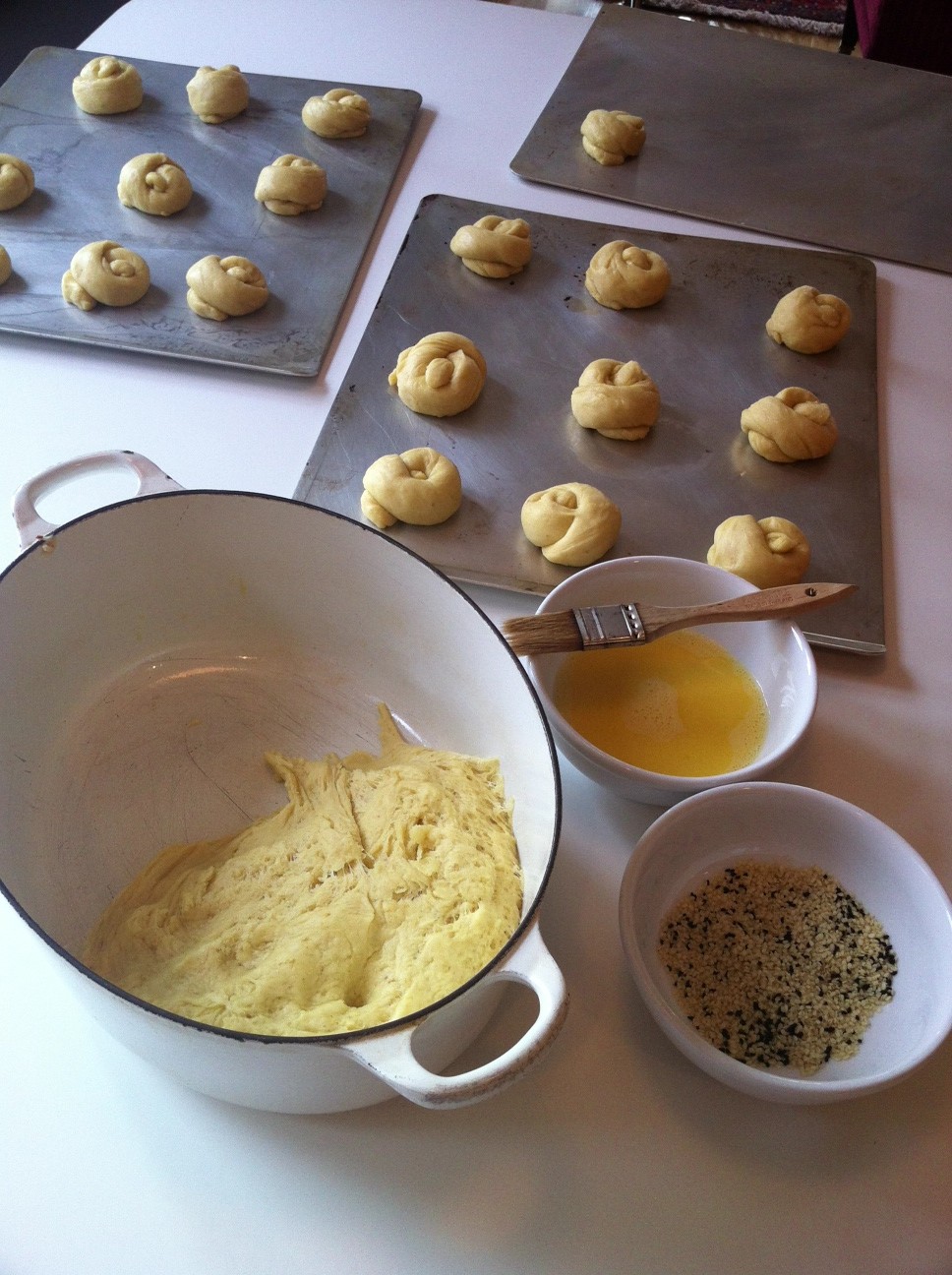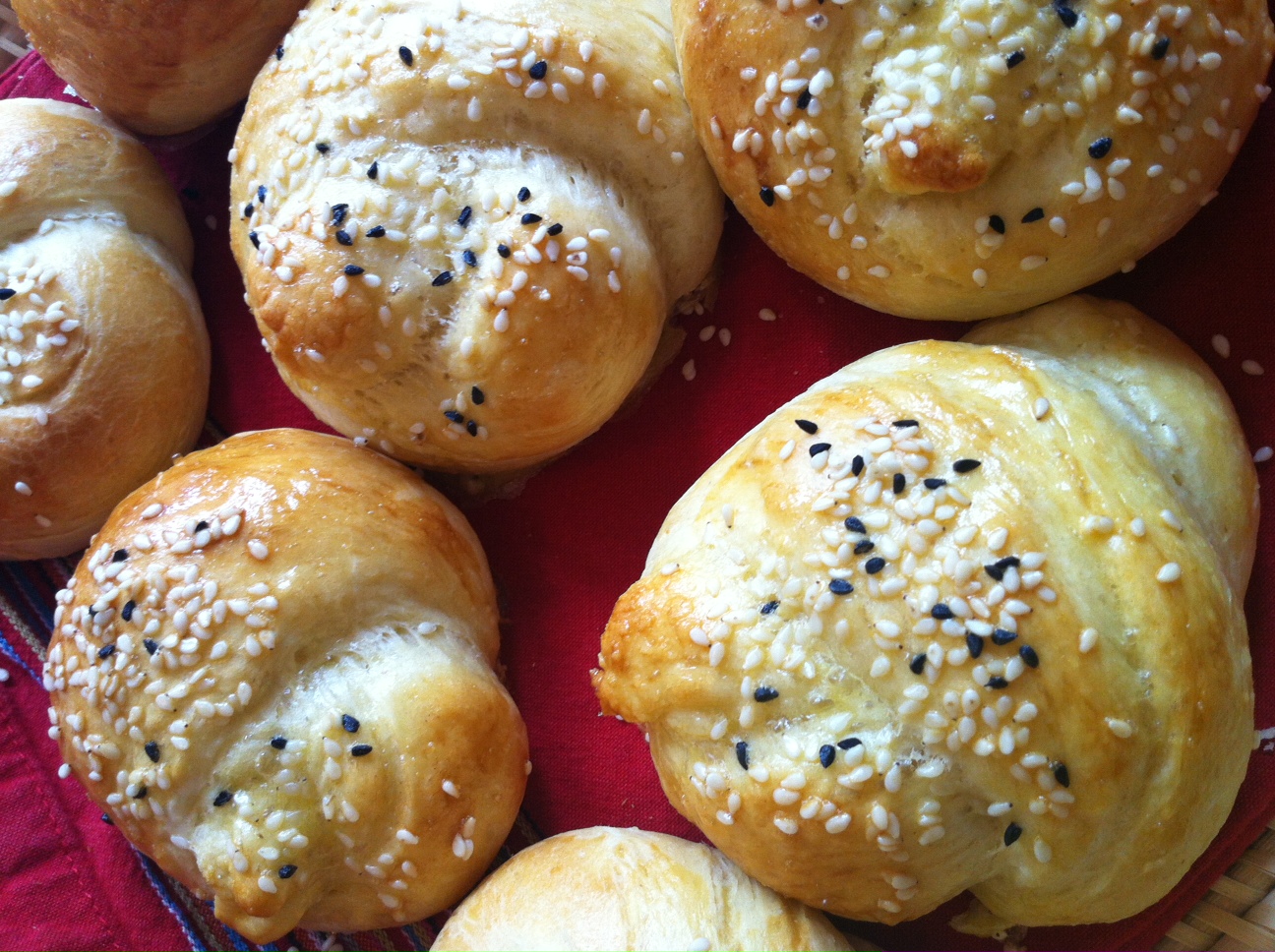Saturday afternoons my sister and I climbed the stairs to our grandmother’s second-floor apartment in the two-family house we shared with her in Watertown, Massachusetts. Sometimes we helped her make macaroni and cheese for lunch, and others we assisted her in preparing elaborate Armenian foods, such as trays full of manti, tiny meat dumplings that would later float in soup, or stuffed grape leaves, which we called cigars. But my favorite was making cheoreg, a sweet roll that was traditionally served at Easter and that my grandmother kept on hand for when her friends stopped by for coffee.
My grandmother prepared the dough before we arrived, so we missed the mixing and the two-hour rise in the unlit oven. She called us, either by phone or by shouting into the broom closet that was just above ours, when the dough was ready to be worked. The minute we entered the kitchen we could smell it—the yeast, the butter, and the aromatic mahlab, made from dried cherry seeds. We sat at the kitchen table, and she handed us each an egg-sized piece of dough that was buttery and fluffy and practically alive. We rolled it out either on the table or between our palms until it was about eight inches long. Then we twisted it into a snail-shaped knot that we set on a baking sheet. Once all the sheets were full my grandmother covered them with a towel for the dough to rise again.
While we waited for the dough and for the oven to heat to the correct temperature, there were a number of amusing activities from which to choose. We played “Button, button, who’s got the button?” with a button on a round of yarn. We pulled pieces of satin from my grandmother’s dresser drawer and wrapped dolls in them. We took my grandmother’s large cookie tin of buttons and spilled them on the bed to sort them. Or the three of us lay on her bed while she told stories from the Bible or the Old Country, both of them exotic, far-off places.
Once the rolls had risen, it was time to brush beaten egg over them and sprinkle them with sesame and black nigella seeds. While they baked, my grandmother’s entire apartment was suffused with that distinctive cheoreg aroma—butter, flour, egg, sugar, yeast and mahlab. When they were done, my grandmother used a spatula to move them from baking tray to cooling rack. Then it was time to sample them still warm from the oven, served with a slice of cheese and some strawberry jam. That was truly heaven.
Nancy Kricorian
April 5, 2013

